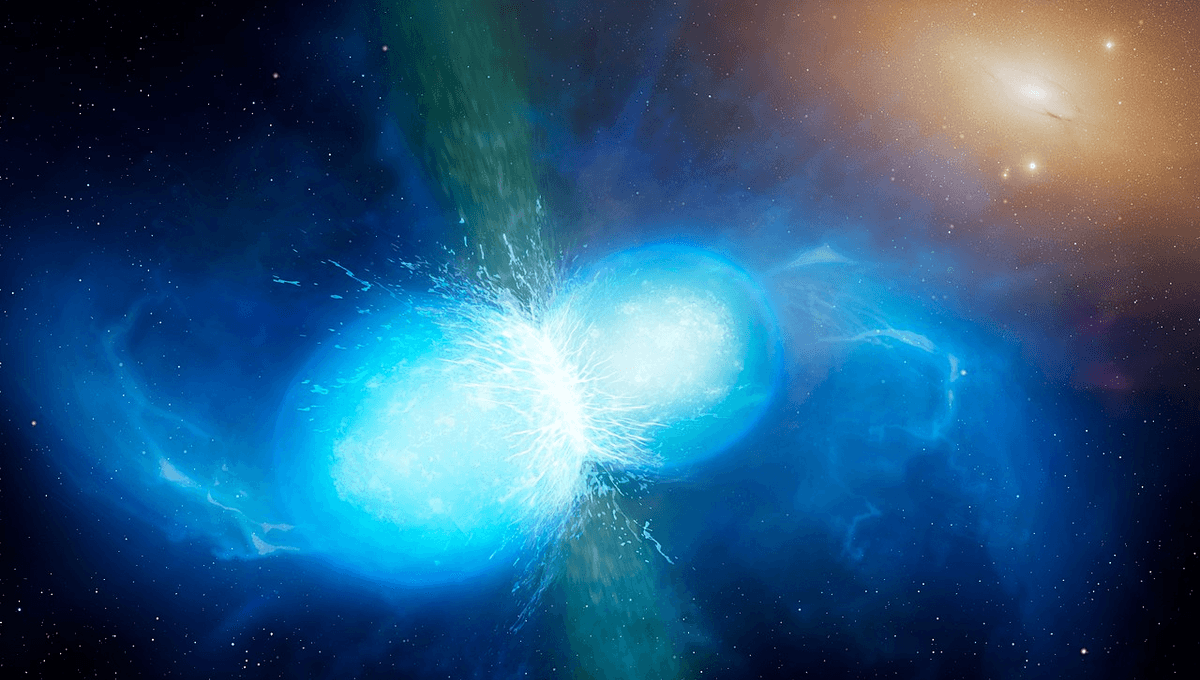
Long-lasting radioactive isotopes found in ocean sediments have been considered indicators of nearby supernova activity. However, according to one, yet to be peer-reviewed, preprint submitted to The Astrophysical Journal Letters, in one case something more exotic was probably involved.
During their lifetimes, stars convert hydrogen to helium, which eventually becomes other light elements such as oxygen and carbon. However, the heavier elements require a star’s death. Supernovae are the most frequent source of heavy elements, with the explosion seeding them across large areas of space for incorporation into newly forming planets. However, we are now coming to understand that many heavy elements are only formed in large quantities in even rarer events, particularly the merger of neutron stars, now known as a kilonova.
One of the elements formed in exploding stars is iron. Ordinary iron, Fe-54, 56, 57 or 58, is not radioactive, giving us no idea of the timing of its production. The Earth’s core is predominantly made up of iron, probably from supernovae that occurred before the planet formed. However, Fe-60 undergoes slow radioactive decay, with a half-life of 2.6 million years. Any produced billions of years ago is long gone. Consequently, when geologists find traces of Fe-60 in sediments, they attribute it to supernovae nearby enough that some material settled on Earth.
However, the discovery of plutonium-244 is harder to explain. Plutonium is an actinid, which the preprint notes “are believed to be synthesized in rare events, such as special classes of supernovae or binary mergers involving at least one neutron star.”
University of Trento PhD student Leonardo Chiesa and colleagues are trying to see what sort of event could explain the presence of both Pu-244 and Fe-60 in sediments laid down 3-4 million years ago.
Others have looked at the same data and concluded there must have been multiple events around the same time, whose products became so mixed we can’t tell them apart. This team, however, believes previous analysis did not properly model the possibility of a collision the right size to produce one massive neutron star not quite large enough to collapse into a black hole.
In this case, they say, the metals produced would be spread by two processes: dynamical and spiral-wave wind ejecta. These would distribute radioactive elements differently, creating the appearance of two events.
The authors conclude two neutron stars merged 350-660 light-years from Earth between 3.5 and 4.5 million years ago. The plutonium formed mostly when dynamical ejecta got bombarded by neutrons, but the iron is a product of the spiral-wave wind. To fine-tune their model, they looked at abundances of eight other heavy element isotopes with half-lives between 1.9 and 33.8 million years.
Far from requiring an unlikely set of circumstances, the authors think many neutron star mergers result in this combination of processes, possibly more than half. We’ve seen so few kilonovas, we don’t have the population sample to test this, but arguably if we can accept the possibility of a kilonova so close to Earth, one with these specific characteristics is not particularly unlikely.
The model also requires Earth to be at the right position in relation to the collision, with the matter that reached us coming from latitudes between 30 and 50, indicating the resulting jet missed us by a long way. That clearly constrains the chances a little futher, but may still be more plausible than two separate star explosions close together in distance and time, with one being something more exotic than an ordinary supernova.
Had the event been closer the consequences could have been disastrous. A kilonova within 36 light-years or so could trigger a mass extinction. As this distance, however, the disruption to the planet would have been small. The ape-like creatures beginning to establish themselves in Africa may have looked at the sky and pondered the light, brighter than any familiar star, that wasn’t there a week before. Mostly, however, they kept on evolving on the path that a million or so years later would lead their descendants, Homo erectus, to establish themselves across much of the world.
The preprint, which has not undergone peer review, is available on ArXiv.org.
[H/T: Universe Today]
Source Link: Deep-Ocean Plutonium Hints At A Nearby Kilonova 3-4 Million Years Ago